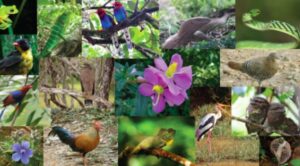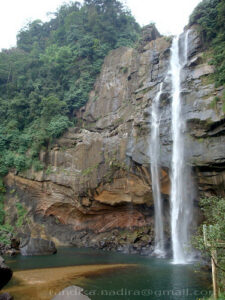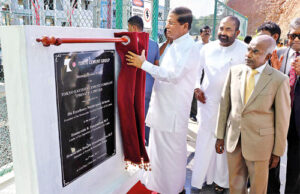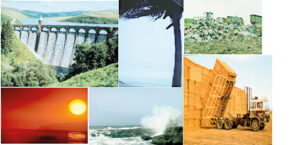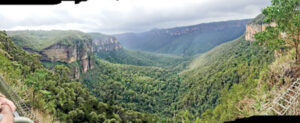
New waste disposal project to be implemented in 7 districts
Novel garbage disposal projects will be implemented in 7 districts, Central Environmental Authority announced.
Deputy Director-General of the Central Environmental Authority, Upali Indarathne stated that by 2020, the projects would be completed in 4 districts.
Upali Indarathne added that in future, a proper method to dispose of waste would be introduced to all the districts across the island in order to combat the rising problem of garbage disposal.
Source – 16/05/2017,Ada Derana, See more at – http://www.adaderana.lk/news/40717/new-waste-disposal-project-to-be-implemented-in-7-districts

Special Committee to look into issues of IDPs and resettled in Mannar district
May 17, Colombo: A special discussion was held at the Presidential Secretariat on Tuesday under the patronage of Secretary to the President Mr. P. B. Abeykoon to look into the issues of the internally displaced persons and the resettled IDPs in the Mannar district.
A group of Muslim representatives and the officials of the Department of Forest Conservation including Secretary to the Ministry of Environment participated in the meeting.
The issues faced by the people in the area, and ways to resolve their issues were discussed in detail at the meeting.
A special gazette notification signed by President Maithripala Sirisena in March on declaring four forests near Wilpattu North Sanctuary as conservation forests has caused serious concern among Muslims and seen as an attempt to prevent Muslims from returning to their lands.
During the meeting it was decided to appoint a Special Committee under the guidance of the President to resolve the issues and decided that the Committee report should be submitted to the President within a month.
Source – 17/05/2017, ColomboPage, See more at – http://www.colombopage.com/archive_17A/May17_1494995140CH.php
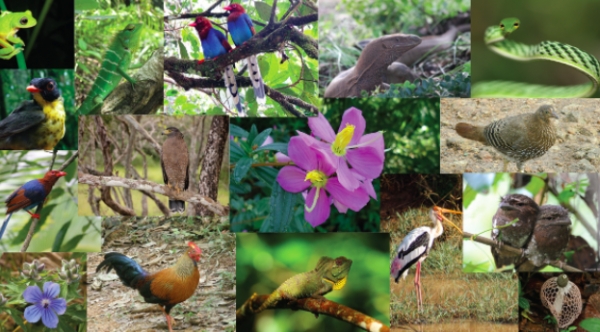
Biodiversity Sri Lanka To Commemorate International Day Of Biological Diversity
Biodiversity Sri Lanka will commemorate the International Day of Biological Diversity which falls on 22nd May each year, with an evening session on the UN designated theme for 2017: ‘Biodiversity and Sustainable Tourism’.
This session will feature four relevant and illustrative case studies from Sri Lanka and the Asia region presented by Maeve Nightingale of IUCN, Asia, environment and wildlife expert, Dr. Sumith Pilapitiya, Madhura de Silva, President, Wildlife Conservation Society, Galle and Ross Sanders, General Manager, Anantara Peace Haven, Tangalle, covering areas such as the significance of the coast around us and carrying capacity and biodiversity issues in our national protected areas.
The event will be held on the 22nd of May from 5.00 p.m. to 7.00 p.m. at the Auditorium of the Hatton National Bank, 22nd Floor, HNB Towers, No. 479 T.B. Jayah Mawatha, Colombo 10, and is open to the general public.
Biodiversity, at the level of species and ecosystems, provides an important foundation for many aspects of tourism. Recognition of the great importance to tourism economies of attractive landscapes and a rich biodiversity underpins the political and economic case for biodiversity conservation. A well-managed tourist sector can contribute significantly to reducing threats to, and maintain or increase, key wildlife populations and biodiversity values through tourism revenue. Although Sri Lanka is a small island, its biodiversity is significantly important both in a regional and global scale. The island has been declared as one of the 25 “biodiversity hotspots” of the world. Sri Lanka’s tourism is the country’s third largest foreign exchange earner and contributes a substantial percentage towards the GDP. In post-war Sri Lanka, tourist arrivals have seen a remarkable increase and there is a significant increase in investments in tourism as well as, infrastructure development through opening up of new tourist attractions.
The theme for this year is primarily about ensuring greater control and management to reduce damage to biodiversity from tourism and pursuing the positive contribution of tourism to biodiversity awareness, protected areas, habitat restoration, community engagement, and resource mobilisation. This theme therefore provides an opportunity to raise awareness and action towards the important contribution of sustainable tourism both to economic growth and to the conservation and sustainable use of biodiversity.
Biodiversity Sri Lanka (BSL) is an entirely private sector owned and driven not- for-profit platform established to promote strong engagement of the corporate sector in Biodiversity and environmental conservation issues in Sri Lanka. BSL actively promotes strong leadership of the private sector in these areas through active learning, providing technical support, sharing information, knowledge and experience, promoting best practices and dialogue with state and civil society partners. Currently, over 65 leading corporates are members of the Platform.
Source – 17/05/2017,Asian Mirror, See more at =- http://www.asianmirror.lk/news/item/23648-biodiversity-sri-lanka-to-commemorate-international-day-of-biological-diversity

Biodiversity Sri Lanka to commemorate International Day of Biological Diversity
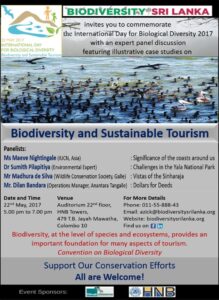 This session will feature four relevant and illustrative case studies from Sri Lanka and the Asia region presented by Maeve Nightingale of IUCN, Asia, environment and wildlife expert, Dr. Sumith Pilapitiya, Madhura de Silva, President, Wildlife Conservation Society, Galle and Ross Sanders, General Manager, Anantara Peace Haven, Tangalle, covering areas such as the significance of the coast around us and carrying capacity and biodiversity issues in our national protected areas.
This session will feature four relevant and illustrative case studies from Sri Lanka and the Asia region presented by Maeve Nightingale of IUCN, Asia, environment and wildlife expert, Dr. Sumith Pilapitiya, Madhura de Silva, President, Wildlife Conservation Society, Galle and Ross Sanders, General Manager, Anantara Peace Haven, Tangalle, covering areas such as the significance of the coast around us and carrying capacity and biodiversity issues in our national protected areas.
The event will be held on the 22nd of May (from 5.00 p.m. to 7.00 p.m.) at the auditorium of the Hatton National Bank, and is open to the general public. Biodiversity, at the level of species and ecosystems, provides an important foundation for many aspects of tourism.
Recognition of the great importance to tourism economies of attractive landscapes and a rich biodiversity underpins the political and economic case for biodiversity conservation.
A well-managed tourism sector can contribute significantly to reducing threats to, and maintain or increase, key wildlife populations and biodiversity values through tourism revenue. Although Sri Lanka is a small island, its biodiversity is significantly important both in a regional and global scale.
The island has been declared as one of the 25 ‘biodiversity hotspots’ of the world. Sri Lanka’s tourism is the country’s third largest foreign exchange earner and contributes a substantial percentage towards the GDP.
In post-war Sri Lanka, tourist arrivals have seen a remarkable increase and there is a significant increase in investments in tourism as well as, infrastructure development through opening up of new tourist attractions.
The theme for this year is primarily about ensuring greater control and management to reduce damage to biodiversity from tourism and pursuing the positive contribution of tourism to biodiversity awareness, protected areas, habitat restoration, community engagement, and resource mobilization.
This theme therefore provides an opportunity to raise awareness and action towards the important contribution of sustainable tourism both to economic growth and to the conservation and sustainable use of biodiversity.
Biodiversity Sri Lanka (BSL) is an entirely private sector owned and driven not-for-profit platform established to promote strong engagement of the corporate sector in biodiversity and environmental conservation issues in Sri Lanka.
BSL actively promotes strong leadership of the private sector in these areas through active learning, providing technical support, sharing information, knowledge and experience, promoting best practices and dialogue with state and civil society partners. Currently, over 65 leading corporates are members of the platform.
Source – 17/05/2017,Dailymirror- See more at: http://www.dailymirror.lk/article/Biodiversity-Sri-Lanka-to-commemorate-International-Day-of-Biological-Diversity-129069.html#sthash.mY12rH8S.dpuf
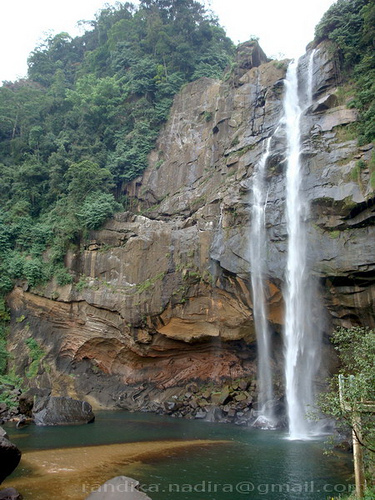
Aberdeen Falls
The Aberdeen Falls in Ginigathhena will be developed as a tourism promotion project, Ambagamuwa Pradeshiya Sabha Secretary S.Sarawanabhavan said. This picturesque waterfall was previously known as ‘Eladona Falls’ but had been named ‘Aberdeen’ by the British later on. The waterfall is 320 feet in height and is the main source of water supply to the Castlereigh Reservoir.
Source – 15/05/2017,Dailymirror- See more at: http://www.dailymirror.lk/article/Aberdeen-Falls-128921.html#sthash.XA0MntY1.dpuf
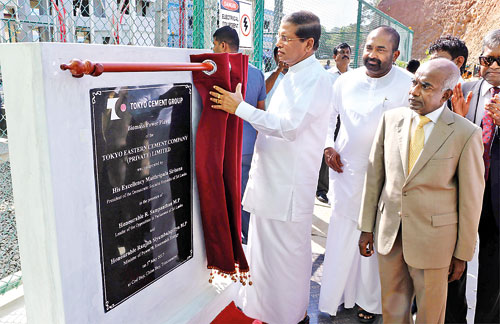
Tokyo Cement opens 2nd biomass power plant in Trinco
President Maithripala Sirisena last week ceremoniously inaugurated Tokyo Cement’s second Biomass Power Plant in Trincomalee as part of a series of events held in commemoration of the late founder Chairman A.Y.S. Gnanam.
The events included the foundation laying ceremony for a housing project for 25 families displaced during the war, distribution of deeds to residents of the Tokyo Cement Tsunami Housing Scheme in Nilaveli, foundation laying for a Technical Building and the commissioning of the Biomass Power Plant inside the Tokyo Cement Factory Premises at Cod Bay, China Bay.
“Mr. Gnanam was a pioneering entrepreneur who ventured into many of Sri Lanka’s firsts, which included the generation of Renewable Biomass Energy. President Sirisena’s visit to the Tokyo Cement Factory to inaugurate the company’s 2nd Biomass Power Plant with a capacity of 8 MW to power the company’s latest manufacturing facility, was a salute to his legacy that will continue to live on for generations to come,” the company said in a media release.
The over 2.5 billion-rupee power plant will add 70 Gwh per year to the national grid generated using industrial and agricultural waste sourced through community trade. In total, the plant will produce 160,000 MW Hours of clean renewable energy per year, equivalent to the annual electricity consumption of 100,000 Sri Lankan rural households.
S.R. Gnanam, Managing Director of Tokyo Cement said that the company has become the single largest contributor of renewable energy in the nation, generating 23 MW with the ability to supply 2.5 MW surplus capacity to the national grid.
Sourcr – http://www.sundaytimes.lk/170514/business-times/tokyo-cement-opens-2nd-biomass-power-plant-in-trinco-239700.html

The UN-REDD Programme on Reducing Emissions from Deforestation and forest Degradation (REDD+)
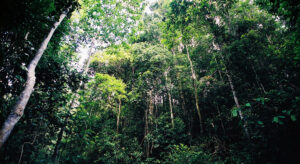 The UN-REDD Programme is the United Nations collaborative initiative on Reducing Emissions from Deforestation and forest Degradation (REDD+) in developing countries. The Programme was launched in 2008 and builds on the convening role and technical expertise of the Food and Agriculture Organsation of the United Nations (FAO), the United Nations Development Programme (UNDP) and the United Nations Environment Programme (UNEP). The UN-REDD Programme supports nationally-led REDD+ processes and promotes the informed and meaningful involvement of all stakeholders, including Indigenous Peoples and other forest-dependent communities, in national and international REDD+ implementation.
The UN-REDD Programme is the United Nations collaborative initiative on Reducing Emissions from Deforestation and forest Degradation (REDD+) in developing countries. The Programme was launched in 2008 and builds on the convening role and technical expertise of the Food and Agriculture Organsation of the United Nations (FAO), the United Nations Development Programme (UNDP) and the United Nations Environment Programme (UNEP). The UN-REDD Programme supports nationally-led REDD+ processes and promotes the informed and meaningful involvement of all stakeholders, including Indigenous Peoples and other forest-dependent communities, in national and international REDD+ implementation.
The first copy of the National REDD (Reducing Emissions from Deforestation and Forest Degradation) Investment Framework and Action Plan (NRIFAP) was presented to President Maithripala Sirisena this week. This is to begin implementation next year.
The UN REDD programme which expects to combat the threat of climate change is a collaborative initiative of the UN and will be completed as a five year (2018-2022), US$ 99 million strategy, financed through international sources.
A special invitee at the event was Vedda leader Uruwarige Wannialaththo who stressed the importance of protecting forests.
Forests play the unique role of converting harmful emissions into harmless carbon. REDD+ is recognized therefore as a global solution to greenhouse gas emissions. We at BSL are committed to support the Government in implementing this strategy.
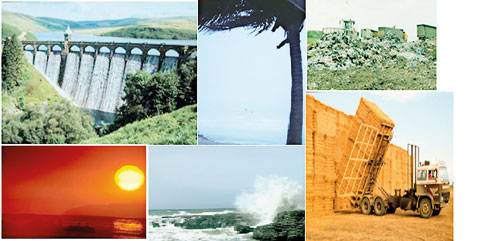
Benefits of electricity generation utilising waste management
Excerpts from a presentation made by B.R.O. Fernando, Past President of the Institution of Engineers Sri Lanka (IESL) and a former Vice Chairman of the Ceylon Electricity Board on Challenges and Opportunities in the Use of Renewable Energy at IESL and the British Council after attending a workshop on renewable energy organized by the World Renewable Energy Council in UK
Growing evidence has convinced most of the scientific community that some degree of climate change has taken place. This climate change is due to a small glitch in the sun’s output of energy or due to the activities of human kind or both. But the media and everyone else slip easily into the use of phrases like “greenhouse gases”and global warming.”
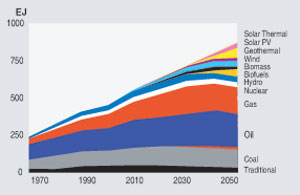 The greenhouse effect of carbon dioxide and other gases present in the atmosphere has shown an increasing number of signs that the nature of the earth’s surface is beginning to change. The discussions held at Kyoto and Johannesburg have increased the awareness of renewable energy.It is worth mentioning that if we compare the emissions from electrical power plants we find that using coal or oil to generate produces 1110 gm of CO2 /KWH. Using gas reduces CO2 to 600 gm/KWH and biomass reduces CO2 dramatically to 16 gm/KWH. ((Ref: World Renewable Energy Congress 2002).
The greenhouse effect of carbon dioxide and other gases present in the atmosphere has shown an increasing number of signs that the nature of the earth’s surface is beginning to change. The discussions held at Kyoto and Johannesburg have increased the awareness of renewable energy.It is worth mentioning that if we compare the emissions from electrical power plants we find that using coal or oil to generate produces 1110 gm of CO2 /KWH. Using gas reduces CO2 to 600 gm/KWH and biomass reduces CO2 dramatically to 16 gm/KWH. ((Ref: World Renewable Energy Congress 2002).
The Meethotamulla garbage dump has raised and resulted in a hornets nest of insurmountable and unaccountable proportions, resulting in the loss of life to 32 innocent people and 30 missing persons followed by the devastation of their homes and livelihood. These poor people’s agony and disgust at living in an area inhaling an agonising smell with an unhygienic environment full of toxic gases, insects, worms and flies was not the general concern nor was it brought to the attention of some politicians of successive governments and health authorities for nearly two decades. This devastation of their livelihood was a blessing in disguise as it has now resulted in immediate measures to inspect and control the management of other garbage dumps around the country, and provided a planned scientific method for waste management techniques using landfills.
Biomass industries are an asset to any country where energy is generated from waste. A wide range of technological pathways are available, ranging from domestic open fires to bio-fermentation processes for the treatment of organic wastes of a community, to fully commercial complex thermo chemical reactors in the form of 100MW combined heat and power stations. Waste from municipal and industrial services represents an increasingly important fuel source that can be used to produce heat and power. Using these wastes as fuel can have important environmental benefits. Methane is a very potent greenhouse gas, 21 times more damaging than carbon dioxide emissions through displacement of fossil fuels produced by biodegradable waste and residue. When diverted to a landfill, gas is collected and used as a fuel (rather than allowed to escape in to the atmosphere, thus avoiding methane emissions). Contributions made at various forums look optimistically at renewable energy technologies of both those that are well established and those that are still a long way from making a commercial impact. Wind power, passive and electronic solar energy and certain new methods in the use of biomass have moved into the normal commercial world. Technologies such as waves, ocean, thermal and tidal energy and the hydrogen economy have not, as yet; but the prospects are still good and the potential benefits are enormous.
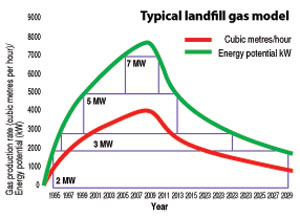 Biomass industries Energyfrom waste
Biomass industries Energyfrom waste
Biomass includes a wide range of chemically stored solar energy resources originating from plant material. Conversion into useful energy services and products can be undertaken using a wide range of technological pathways. Biomass products can vary in scale from simple combustion to domestic open fires to bio fermentation processes for the treatment of organic wastes of a community, to a fully commercial complex thermo chemical reactor in the form of 100 MW combined heat and power station.
Traditional biomass currently contributes from 12 to 13% of global primary energy demand, but is based mainly in the non-sustainable annual burning of 2×109 tonnes of firewood, 1.3×109 tonnes of crop residue and 1×109 tonnes of animal dung. Removal of this material from the land, robs the soil of recycled nutrients, exposes it to wind erosion, reduces the organic matter content and reduces the soil rooting depth. There are generic environmental issues relating to the biomass base. USA has fallen behind much of the world in the use of biomass and other renewable energy forms to produce electricity and steam. Instead USA embraced coal for energy production. Currently over 52% of US power is fueled by coal. CO2 emissions for US coal fired plants are estimated to be 2.3 million tonnes per year. The CO2 output of USA has increased by 20% since 1990 and millions of tons of sulphur in the form of SO2 and SO3 are emitted every year. Wastes from municipal and industrial services represent an increasingly important fuel source that can be used to provide heat and power. These types of waste are produced worldwide wherever there are centres of population. Using these wastes as fuels can have important environmental benefits. It can provide a safe and cost effective disposal option for wastes that could otherwise pose significant disposal problems. The use of waste as a fuel helps to reduce carbon dioxide emissions through the displacement of fossil fuels.
Any energy that is recovered from biodegradable waste can be regarded as renewable energy. It comes from carbon dioxide in the atmosphere. When the biomass material is used as a fuel, the CO2 is returned to the atmosphere in a “carbon neutral” cycle, and the biomass is used to displace fossil fuels. Instead of being left to decompose naturally, it will actually help to limit the emission of CO2 and methane to the air.There are many ways of combining waste disposal with energy recovery. The UK’s landfill gas industry is today one of the most developed in the world. For the last 45 years landfill gas has provided UK companies the ability to convert a potential hazard into a source of renewable energy. As the industrialised nations move towards reducing emissions to the atmosphere in an effort to stem global warming, landfill gas is fast becoming one of the chief areas of activity for developers, providing as has been proved in the UK, a low cost, reliable baseload with clear environmental benefits. During the past few years a capacity of more than 600MW of landfill gas has been commissioned.
Biomass resources converted to bio energy through technology routes
(Heat, power or transport fuels) Landfill gas
Energy can also be recovered from waste that had already been landfilled in the form of landfill gas (also referred to as biogas). In the process of anaerobic bacteria break down the organic fraction of the landfill in the absence of air, generates a mixture of gases comprising mainly methane, carbon dioxide, oxygen, nitrogen and many hundreds of trace compounds of gases as well as water vapor and waste products. The biogas can be collected by drilling wells into the waste and extracting it as it is formed. After cleaning, it can be used in an engine or turbine for power generation, or used to provide heat for industrial purposes such as brickworks situated near the landfill site. Landfill sites can develop commercial quantities of “landfill gas” for up to 30 years after the waste has been deposited. The graph given above is a graphical representation of landfill gas and energy availability against time. The gas is normally collected from a series of vertical boreholes that have been purpose drilled in to the site.
As mentioned earlier, methane has a greenhouse gas potential of approximately 21 times that of carbon dioxide and although methane is eventually oxidized in to the atmosphere, the uncontrolled release of landfill gas contributes significantly in emissions of greenhouse gas and thus global warming The International Panel on Climate Change (IPCC) estimated that landfill gas contributed to between 20 million tonnes and 70 million tonnes of methane in the atmosphere in 1990. Estimated emissions of methane from solid waste disposal within the 15 European Union countries rose from 7,233,000 tonnes in 1994 representing the largest single source of methane and around 33% of the total, in the EU. Removal of methane emissions and conversion to carbon dioxide, provides a valuable contribution to the reduction of greenhouse gas emissions. A typical 1MW landfill gas project will reduce gas emissions by around 30,000 tonnes an year.
Anaerobic digestion
The biological processes that take place in a landfill site can be harnessed in a specially designed vessel known as an anaerobic digester, to accelerate the decomposition of wastes. Anaerobic digestion is typically used on wet waste such as sewerage, sludge or animal slurries. But the biodegradable fraction of municipal wastes can be added to wetter wastes to increase the biogas output.
The rapidly expanding functions of the renewable sector worldwide is comparable to that of the oil and gas sectors in the early 1970s.The positive roll continues today. The experience gained after 45 years, in oil and gas will undoubtedly continue to the development of renewables. As part of the climate change strategy most countries the world over have established their targets for the renewables obligation of 10% of the total electricity supply, by the year 2010 recognising the renewable’s contribution to the reduction of CO2 emissions.(However Sri Lanka failed to comply with this.) This was achieved by the requirement placed on electricity supply companies to source an increasing proportion of their supply from “green energy.” Companies that have failed to do this, have the option of buying out their “obligation” at an initial US$42.5/MWH, such monies when paid are distributed among the companies that did meet the obligation.
In such a scenario, wind power will be an obvious winner offering as it does rapid deployment of electricity generating plant at the lowest prices, anywhere in the European Union. Wind power is a technology that has wide support especially in the UK, with off shore and on shore wind which are most strongly supported. Energy from waste makes up a useful part of an integrated waste management system. Furthermore, renewable and greenhouse reduction targets require the exploitation and support of all available clear technologies. Landfill gas clearly offers large potential for the development of projects in countries where carbon certification will provide a degree of financial support for the investment required. The Sri Lankan government should take immediate steps on this vital issue as tonnes of waste are deposited daily in various parts of the country, which is indeed an environmental and health hazard. The present Government should immediately initiate industries in various parts of the country where garbage dumps are in existence to generate electricity, recycle the waste and produce composts as fertilisers and also to earn valuable foreign exchange from carbon certification by generating electricity.
I wish to conclude by drawing attention to a document produced in April 2002 by the National Energy Laboratory in Colorado and operated by the US Department of Energy by Midway Research Institute, wherein the advances made from 1977 to 2002 after 45 years of research excellence are given with the predicted performances in 2020 for bio energy, solar and wind energies
Source – 14/05/2017, The Sunday Times, See more at – http://www.sundaytimes.lk/170514/sunday-times-2/benefits-of-electricity-generation-utilising-waste-management-240025.html

Limits on ground water use viewed with suspicion
Local authorities have been asked to strictly enforce new regulations to prevent over extraction of ground water amid fears that water levels are declining.
But farmers suspect this is an attempt to tax water resources through regulation in the long-term.
The latest regulation which has been gazetted will be implemented island-wide to protect ground water, chairman of the Water Resources Board (WRB), A.C.M Zulficar said.
Only 30,000 litres of water per month will be allowed to be tapped from the ground.
Zulficar said ground water levels have dropped 4.5 metres below ground in the coastal areas although the normal level should be 1.5 metres below ground.
“Due to overuse of ground water in Jaffna, the water had been completely drained and sea water had seeped inland, while Puttalam is also an affected area,’’ Mr Zulficar said.
All government, local government or non-government organisations and institutions including individual users have to submit detailed reports of their water requirements as projects to obtain approval, he said.
Written permission of the WRB should be obtained for building agro wells of the depth of four metres or more, or for wells or tube wells for commercial agriculture and industry.
The industries include bottled water, beverages, hotels, livestock farms and coir and rubber industries.
Zulficar said a grace period is effective until the end of this month.
Industrial users of ground water should fix flow meters to monitor the amount of water pumped from a well, keep records of daily use, and maintain capacity.
Records should be provided to the WRB every three months, while any institute or an individual engaged in bottling water, and bottling beverages using springs, should have samples analysed by a reputable chemical laboratory every six months.
WRB only allows to extract 30,000 litres of ground water per month, for industrial, commercial, and agricultural use, Zulficar said.
“So far, we have received around 150 applications and 70 of them for digging agricultural wells, while 90 tube well miners have been registered. There are also 250 tube wells,” he said.
Additional District Secretary of Puttalam, W.M.C.K Wanninayake, said that the dry weather had forced the shift to the use of ground water.
He said that the WRB has informed them of the situation.
The Pradaeshiya Sabha has been informed and has been asked to deploy water tankers to supply water.
“We instructed our officers to implement the regulations when recommending tube wells,’’ he said.
In Nuwara Eliya, Divisional Secretary Sujeewa Bodimanna, said awareness programmes have begun.
Meanwhile, the All-Island Farmers Federation, national organiser, Namal Karunaratne, welcomed the moves to protect ground water. But farmers suspect that registration of wells is being required so that taxes can be imposed.
Mr Karunaratne said that the government should also stop illegal land filling, sand mining and also build more tanks to help preserve ground water.
He complained that while large scale beverage industries are allowed to use water others are being asked to register including tube well creators. So while actions are being taken to protect ground water, streams will be exhausted.
Environmentalist of the Biodiversity Conservation and Research Circle, Supun Lahiru Prakash, said that the ground water levels have to be preserved through the Water Resources Management act.
He said that the ground water table is a valuable resource.
Mr Prakash said that the Government should also consider the environmental impact and the pollution of the water. He said that the Government first should stop dumping garbage in marshy areas that feed the ground water.
The Government also should limit the amount of water used by industrial and commercial users who use ground water for beverages and bottled water.
He said that rather than imposing a limit of 30,000 litres a month, limits should be devised based on water volumes under ground.
Source – 14/05/2017, The Sundat Times, Read more at – http://www.sundaytimes.lk/170514/plus/seeing-the-blue-mountains-for-the-first-time-239963.html

Seeing the Blue Mountains for the first time
It was to be Australia’s first ever national gathering of those who had walked – or had an interest in – the ancient Spanish pilgrim trail called The Camino of Santiago.
I was enthusiastic to attend this conference partly because I had been invited to give a presentation based on the book I had written about this 800 kilometre trail which I had walked with my son a few years ago. I was even more enthusiastic to go because I had never been to this beautiful part of Australia previously!
Located west of the big city of Sydney, the picturesque Blue Mountains may be described as a “hill country” for vacationing Sydneysiders. It is close enough to reach from Sydney (one hour by car and 90 minutes by train) yet far enough away to constitute a mountainous rural landscape ideal for hiking, bushwalking, rock-climbing- and just relaxing in a cool and salubrious climate.
The Blue Mountains are so called because of the bluish tinge taken on by the mountain range when viewed from afar – thought to be due to gases termed Volatile Organic Compounds (VOC) that are emitted by the hordes of eucalyptus trees covering the mountains. The gas particles in the air scatter the shorter (violet to blue) wavelengths of light, resulting in a blueish haze over the mountains when they are seen from a distance.
The Blue Mountain region received UNESCO World Heritage listing in 2000, being recognised for its outstanding diversity of habitats and plant communities. The large area of natural wilderness includes seven national parks blessed with towering cliffs, grand canyons, amazing rock formations (including the famous one called ‘The Three Sisters’) and spectacular waterfalls. The temperate rainforests here host various different species of eucalyptus trees and several species of endemic animals including Australia’s famous koala bears.
While in Blackheath we drove to Govett’s View Lookout and from there did a fifteen minute climb to visit the magnificent Govett’s Leap waterfallwhich drops an amazing 180 metres from the top of the cliff. If you would like a virtual three dimensional view of Govett’s View Lookout, go to http://www.nationalparks.nsw.gov.au/things-to-do/lookouts/govetts-leap-lookout and click on Google Street View Trekker.
Though it is a small country town – a big village really – Blackheath is a popular place for visitors, boasting some great walking tracks and beautiful scenery. We were able, during our time there to hike to a couple of the famous lookouts, including Baltzer Lookout from which one has a good view of the famous Hanging Rock. We also visited the Dhamma Bhumi Vipassana Meditation Centre in Blackheath which offers residential courses in Vipassana Meditation.
The highest town in the Blue Mountains is Katoomba which has a host of activities for the visitor – the Blue Mountains Cultural Centre which is a well-known regional art gallery, the black granite Peace Memorial sculpture in the Civic Place gardens, the Waradah Aboriginal Centre where we were able to watch performances of traditional Aboriginal dances and learn about the culture of Australia’s indigenous people from members of the local tribes themselves.
A 15 minute drive south of Katoomba took us to Scenic World which offered rides on what they claim to be is the steepest passenger railway in the world, going down some 300 metres through a cliff-side tunnel to emerge on the floor of the Jamieson Valley into luxuriant temperate rainforest. From here we were able to explore the rainforest along the scenic walkway, a mile long boardwalk built just above the floor of this ancient valley and protected by the canopy of trees towering above us.
I have always enjoyed travel, and I have come to believe that a conference is a good excuse to make a visit to experience places that I have not seen before.
After all, as the Japanese poet Matsue Basho observed, “I will see with my own eyes remote places of which I have only heard”!
Source – 14/05/2017, The Sunday tims, See more at – http://www.sundaytimes.lk/170514/plus/seeing-the-blue-mountains-for-the-first-time-239963.html


